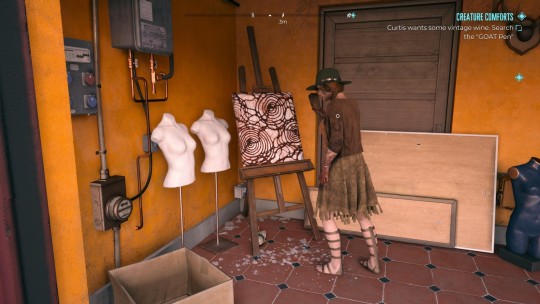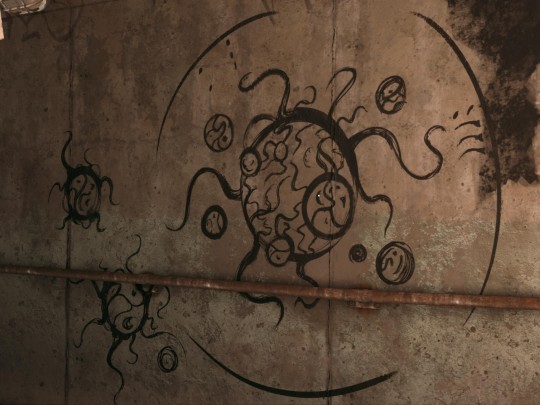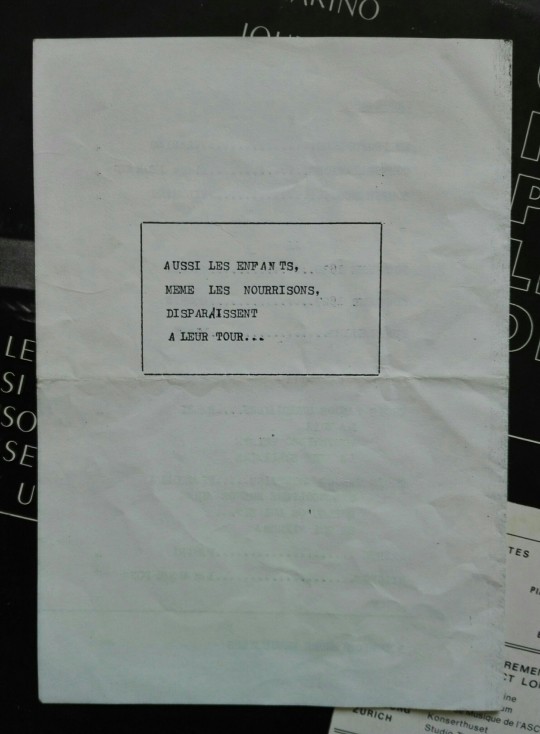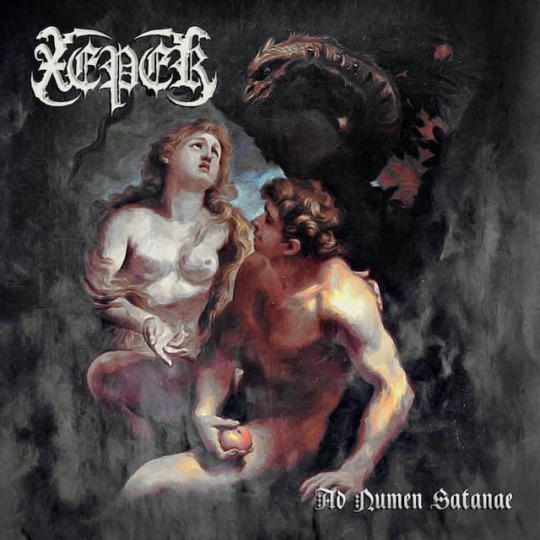#numen records
Text

#naturally#nature#travelling#music#downtempo#chillout#numen records#triphop#lounge#peaceful#gratitude#givethanks
914 notes
·
View notes
Text
KPOP READING: choi san X anonymous in bed





WARNING: explicit content ahead. for + 18 users only !
i took this reading yesterday and it got me shaking fr so of course i wouldn't be evil to keep it only for myself and my querent so i came here to share xD
content taken out of a romantic reading of anonymous & san
san is a hopeless romantic, that's why when you fuck him the sex is full of passion, touching, kissing and bitching. he has the talent of making you feel confident from the moment he looks at you as if you were the hottest woman in the world, that is when he doesn't get needy quickly and rubs his hard dick on your thighs or puts his hand on yours. top of his pants to show you that you drive him crazy, "feel what you're doing to me".
He would have an unparalleled fixation on your thighs and would always start tasting you through them, running his hands, kissing, squeezing until his knuckles were white, all while looking directly into your eyes to see your reaction. he would be addicted to you, your body, your moans, your pussy. he doesn't waste time, he wants all of you, it's like his vision is a tunnel for your pleasure, much of his focus would be to please you.
he would go thirsty to the pot, suck your tits playing with his tongue just like an appetizer and then make you ride his face in that rude way that makes him gasp because for him to drown in your pussy would be a fucking privilege. he plays with himself over his underwear as he sucks you off and thanks you for not being able to hear how much he moans like a whore masturbating while you use his face as a playground. san loves messes, gets his face all smeared and then kisses because you taste so good and he wants you to taste it too, but coming straight from his tongue.
he would kiss you passionately, running his hand all over your body and squeezing you tightly because he wants you to shiver and feel that he is strong, that he can fuck you so good and hard that it makes you go weak just by the way he touches you. a lot of kink in pregnancy and breeding kink, actually the kink is in putting you a baby, it would be like showing the world that he owns you, besides that he likes to make a mess and see the cum running out of your legs. his favorite position is when you're riding his dick because then he sees your fucked up face, and he would want you to keep your hands still without masturbating because you can only come with his dick.
he would want you to show off for him, the kind who wears really nice lacy lingerie and makes a show of taking your clothes off, he puts your panties to the side and fucks you with your lingerie on because this drives him out of his mind. san likes to be seduced and enticed, if you provoke him, he'll go thirsty... plus he might like to keep records in photos or videos if you let him. the sex in front of the mirror and the dim light is a canonical event, he wants to see what's going on but he also wants the romance mood to be maintained... and san is definitely the type to put rose petals on the bed but tell you fucks on the floor, doesn't put music on because he likes to hear you moan how good he fucks you and although he really likes noise if you moan really softly in his ear like it's a secret his brain goes 100% error 404

deck used: white numen tarot
you can follow me for more contents like this and also book a reading with san or any other idol of your choice. check my pinned to know more <3
155 notes
·
View notes
Text
Just writing ideas down before I forget them. I actually rly like the larger implications of the whole "the zombie outbreak is actually manufactured to usher humanity to the next level" because who's to say that they hadn't been working at it for a while?
The art that Francesca draws

looks really similar to the art in the GOAT pen

which looks similar to graffiti on the street,,,

what if they had been putting shit in the water for a while and only truly kickstarted the event when they were sure at least someone would be immune? Is that why things got so bad so quickly down in the sewers? Because it was already there before the outbreak started fully.
(all caps are from @itszombietime I haven't gotten around to recording my playthrough yet)
It's worth noting that the blood vessel design that Francesca is drawing looks a lot like the overlay that happens when there's an "earthquake", and also of note, there's at least 3 or 4 "earthquakes" when we're being loaded onto the plane. the earthquakes are already sort of thematically linked with the numens, as they seem to happen most when we're near another one (i.e. when we're getting on the plane, the numens finds us in the sewers, when we're approaching subject noah, and so on).
I also wonder if our plane was shot down not just because of Robert turning mid-flight, but because there were canonically six potential numens on board. I wonder if Robert was found to be infected but still let on anyway just to test the flight. I wonder if this happened to more flights than just ours. There's also graffiti about the plane specifically going down.

I mean, look at it this way, no shoes lady (Kondstant? Konrad? icr) has a squad of two other numens with her. I'm not entirely done with the story, but I'm betting we don't see that many more numens? (I'm only like two quests away from finishing so I'm betting on there not being another 11th hour twist) So Lola-No-Shoes has two besties who evolved, she alludes to more but never rly shows them, seems very intent on waking us, specifically, up.
I just wonder if there's a connection there. If something got put into the water to get people acclimated to the acrophage and that's why we see the similarities in artwork across the city, that's why the artwork looks like what happens when there's earthquakes which looks like what flashes across our vision. I also wonder if Francesca is also a potential numen but just hasn't gotten "awakened" by no-shoes-worstie-lola.
I don't know, I haven't finished the game yet and it's been a hot minute since I've played dead island 1, so there's probably something I've looked over! I'll come back to this once I've replayed and gotten all the journals etc etc
#dead island 2#dead island 2 spoilers#dead island spoilers#I just like talking abt video games! I think even corny dorky games like dead island are fun to rly dig into#the writing in this game is so clever and so whip sharp#mostly it's used in service of comedy but every so often there's a moment where ur like oh someone wrote this game with care#like it all fits together nicely
42 notes
·
View notes
Photo

Fred McDowell: The farmer who emerged from the woods and made a masterpiece
I thought it might be good for newbies to Mississippi Fred McDowell –like I was when I recorded “Live in New York”– to find out about where Fred came from, recording wise. This article in the UK webzine, Far Out, lays it out pretty well. You might want to dig deeper into folklorist Alan Lomax, but more importantly, you'll get a glimpse of the ambition that drove Fred from a Mississippi farm to his well deserved worldwide acclaim. -Fred Seibert.
By Tom Taylor @tomtaylorfo
Far Out Magazine Sat 18 November 2023 22:00, UK
Some blues players can get their guitars to tell a story; Fred McDowell could get his to sing an opera akin to a southern Les Mis. “With Fred McDowell, I just love the way he articulates the notes,” fellow blues guitarist Bill Orcutt explains. “I’m hardly unique in that, but there’s just something about that that I love.” He’s not alone in that love either; everyone from Keith Richards to Bonnie Raitt have cited him as a star that they have attempted to emulate.
However, the one element nobody could ever copy was the humble backstory that brought him to the world. Long before he earned the prefix of Mississippi and became a big attraction at juke joints, got swamped backstage at folk festivals, or had his track covered by The Rolling Stones, he was just strumming away to an audience of nearby wildlife on his porch after a long day at work. Occasionally, he’d find himself in a situation where someone might toss him some loose change, but any notion of fame seemed unfamiliar.
But his skills were profound all the same, and fate would drag him towards another American numen on his travels. Alan Lomax was a roving ethnomusicologist, which is a big word for a curious fellow with a portable recording device that could capture the nation’s true folk on the move. One day, during Lomax and Shirley Collins’ great Southern Journey expedition, they rocked up in Como, Mississippi. They were intent on capturing the music at a local dance and the Young brothers’ fife and drum ensemble.
It was 1959, and McDowell was a 54-year-old wondering what his legacy would be beyond the farm he kept. So, without much fanfare and no warning, he decided to pick up his guitar, weave his way through the local woods, and rock up at Lonnie Young’s porch, where the recording was said to be taking place. Lomax and Collins lent him their ears, hit record, and old McDowell began to play.
Half a century later, if you close your eyes while listening to the masterpiece now known as The Alan Lomax Recordings, you can almost see the overalled maestro on the creaking porch ahead of you, hear the rustle of the southern breeze through the lowering tupelo trees, and smell the dancehalls buffer in the air. Of course, some of that is due to the suggestion of the cover art on the Mississippi Records pressing, but what I’m trying to convey is the dogeared sincerity that renders this authentic tape so beguiling.
Even at the time, Lomax and Collins were so flummoxed by the humility and skill of this unknown farmer that they quickly whisked their tapes off to a blues label, and in his autumn years, McDowell became an internationally renowned star, typifying what was best about the blues when the revival movement had somewhat muddied the waters — he was the new (old) find that the kids were craving.
He would soon rub shoulders with the next generation, teaching Raitt how to play slide guitar, touring with the likes of Big Mama Thornton and John Lee Hooker, and embracing the flattery of being covered by rockers despite declaring himself that he did not play rock ‘n’ roll. He left the farm behind and enjoyed a good 13 years of fame until his death in 1972, aged 68, but his old porch was never truly that far from his artistic thoughts, so even beyond the masterful Lomax Recordings, he’s the bluesman who can capture the earthiness of the South with more verity than anyone.
8 notes
·
View notes
Note
Hello, I had written a little story a while back and have decided to send in the second part.
Where our tale left off, the young servant of numen nobility, now guided by the grace of gold, had experienced a change in fate. Hands that were once cracked and bleeding from washing laundry in lye have now given a chance to heal, for the servant has been reassigned to an infirmary of sorts as an apprentice.
One fateful day, the servant was taking stock of the herbs and poultices while their teacher was away. As they worked, they soon noticed that grace was pointing towards the door, where a boy had just walked in, surrounded by, almost emanating the same golden presence that they adored so deeply.
His name was Radagon, and he had been injured in a spar against his sister's shadow. The servant would treat his injuries, bandaging every cut with care, and Radagon, for the first time in his life, felt seen as someone beyond Marika. As someone real. He started to appear often, with injuries obviously caused by excessive training, though he never admitted it. If he could not compete with Marika in divinity, then he would outshine her in every other way possible.
And thus, the to-be golden consort knew Radagon long before he appeared in historical record.
(Apologies for both length and quality, I needed to get this idea out so it would stop haunting me. I hope you have a wonderful day.)
👍
#elden ring#eldensoulsborne#elden crack.#golden consort.#radagon of the golden order#thus yandere rarika was born.#so sorry for getting to this so late.#I've kept yandere radagon in my notes for a min; I need to revisit them.
12 notes
·
View notes
Note
i think people assume greter will is evil because after radagon defeat the elden ring desapear from radagon elden beast surge from the black mist inside him and made he the sword, the impression is the beast is the literal thing inside radagon and he is but a tool and for some reason the beast want to fight the player. and you know in bloodborne everything for the fandom is blamed on oedon or moon presence. is easy to blame something that the players consider inhuman to be the mastermind all along
It's not like I am against idea of the Greater Will being evil, I don't like that this view is based on mistranslation rather than proper analyses. So far the most evil deed of the Greater Will is banishment of Nox, but even then I wonder what exactly lead to the banishment? They killed a god (assuming that Fingerslayer Blade has the same origin as Sacred Relic Sword) but we killed a god too, burned Erdtree, the Elden Ring was shattered, but the Greater Will is kinda like “okay.jpg”
The Greater Will did like 2 confirmed things in entire timeline, sent golden star with Elden Beast on the Lands Between (and there is a lot of evidence that it was origin of life, considering Hyetta’s dialogue and golden star-golden amber-primordial matter-primordial life chain of transformations) and punished Nox for some reason. The Elden Beast is Elden Ring and... I don’t know, how anyone could look at this jelly and say that it was a major political actor, who played the strings behind the scene?
Ahh, Great Runes are the stuff of demigods; the children of the goddess, Queen Marika. She who is vessel of the Elden Ring.Tainted by the strength of their runes, her children warred, but none could become Elden Lord
Maybe influence of the Elden Ring exists (it’s a bunch of runes after all), but it’s like, you know, more subtle thing than Elden Beast ordering Marika what dress to wear today. Think about One Ring from Tolkien works (Numen/Numenor, the Lands Between, maddening rings, anyone?), it’s not exactly mind-controlling, but it corrupts a person over the course of time and we know how much Miyazaki loves this trope. Perhaps description of scar/sorseals hints something like this:
These seals represent the lifelong duty of those chosen by the gods.Solemn duty weighs upon the one beholden; not unlike a gnawing curse from which there is no deliverance
(so, what kind of influence Nox tinfoil helmets were blocking then?)
I have a strong disdain towards Marika/Radagon are sockpuppets of hallucigenia theories, it basically erasures them as characters (I can give a pass for Radagon’s bossfight and bossfight only simply because of how remembrances are working). Speaking of Radagon, was he even turned into Sacred Relic by the Elden Beast intentionally? It takes the sword and swims from us like it’s about to break world record. It’s scared. I’m surprised that people don’t talk more about Seluvius and Preceptor Miriam wearing Mask of Confidence (when Radagon married Rennala, he ordered the Carian magic preceptors to don these masks. To make it clear that all of their matters were to be kept strictly private). Where exactly Seluvius learned about Fingerslayer Blade and why is there Red Wolf of Radagon near Siofra River?
I agree that it’s easy to blame some abstract thing, especially when not one, but two waifus are presumably antagonistic towards it. People are writing 10 paragraphs long theories explaining how Ranni “I did it all” never really participated in Night of Black Knives (the most recent gem I’ve seen recently was theory that Godwyn wanted to be killed) because it’s really hard to accept for some fans that she isn’t pure and meek doll.
#elden ring#elden beast#reply#I hope people understand that waifus was used to describe how fandom views them#asks will be reopened after next lore post#tbh I don't remeber bb fandom being so bad#maybe I was in different circles
30 notes
·
View notes
Text
✨ Welcome to the Paranaturaverse! ✨
A universe where folklore, myths, urban legends and everything inbetween is reality. Across two timelines, two planets, multiple dimensions and outside dimensions, many stories from throughout history are ready to be told.
Aliens, both hostile and harmless, make their way to Earth. Humans are genetically altered to grant them unnatural abilities, a gross mimicry of naturally-existing psychics. Fantastical beings and fae lurk in the forests, strange interdimensional beings flicker in and out of reality. A woman makes a choice that will split reality in two, and gods oversee all.
///////////////
Notable races
Humans: The most common sapient race on Earth. Two subspecies includes Psi-Humans, humans born with psychic abilities, and Phenomenals, humans whose already irregular genetic makeup has been scientifically enhanced.
Calcaniums: A empirical race of planet-conquering aliens from the Andromeda Galaxy. Originally from their home planet Calcania, their colonisation spreads throughout the galaxy, and they now have their sights set on the Milky Way.
Doggerlandians: Amphibious, finned humanoids who live in the North Sea. Typically asocial and wary of humans, they keep to themselves, although some sightings (and even attacks) have been reported. Often mistaken for mermaids in previous decades, recent theories hypothesise they were once humans that rapidly evolved to adapt in the now-sunken Doggerland.
Faefolk: A term that spans a wide variety of otherworldly creatures, such as elves, baobhan sith, changelings, irissids, and sprites. Although many reside in the human realm rather than Arcadia, they often keep out of sight from people. Some are benevolent, others malevolent.
///////////////
Notable locations
Bronze Bay: A seaside town in California, USA, named for the copper deposits that give the beaches a rich, rusty colour. Founded in the 1800s and formerly a mining town for the aforementioned copper, the town records claim giant lizards once roamed the deserts on the town outskirts.
Tag: #bronze bay
Ravenswood: A rural town in Kent, England, famous for the many supernatural rumours surrounding it. Home to an ancient forest that, if entered, you'll never leave quite the same way.
Tag: #ravenswood
Calcania: The home planet of the warmongering Calcanium race, located in the Andromeda Galaxy. The seat of the Almighty Leaders, they oversee their expanding empire, and crush all that stand in their way.
Tags: #calcaniums #calcania
Arcadia: The realm of the faefolk. At least three kingdoms are located in this realm; Rhyneris, the Seelie Court, and Unseelie Court. The prince of the Sun Elves attempts to make peace with the Moon Elves, whilst the two queens of Rhyneris attempt to co-exist with the fragmented aspects of their former god.
Tags: #rhyneris #seelie court #unseelie court
Numen Wight Laboratories: The biggest and most advanced laboratory in America, named after its founder. It has branches covering genetic engineering, robotics and curiously, paranormal studies. Rumours surround the company regarding unethical experimentations, but the current owners and employees deny any such knowledge. And anyone who goes snooping in the greenhouse never comes back out.
Tag: #numen wight labs
#this is a basic lowdown on a few things#more will be covered in-depth in future posts :]#paranaturaverse#original project
1 note
·
View note
Text

Xeper - Ad Numen Satanae (Soulseller Records, 2021)
youtube
0 notes
Audio

Güncel modern kompozisyon kayıtlarından bir seçki // A selection of recent modern composition recordings. Download.
01 – A Winged Victory For The Sullen – All Our Friends Are Vampires
02 – Sergio Díaz De Rojas – El Gato Escondido Entre Las Plantas
03 – Vetle Nærø – Little Dreamer
04 – Hanakiv – Home II
05 – Ole-Bjørn Talstad – Motbakke
06 – Linda Rum – Mond
07 – Nat Bartsch – Breanna
08 – Francesca Guccione – Parallel Echoes
09 – Onur Tarçın – Réfraction
10 – Bruno Sanfilippo – Numen
11 – Penguin Cafe – Second Variety
12 – Tomo-Nakaguchi – Twilight Glow Of The Sky
13 – Poltrock – Bray Dunes
1 note
·
View note
Text

#life#new dawn#change#elegance#music#downtempo#chillout#spotify#triphop#lounge#alternative#ambient#numen records#bandcamp#naturally#at peace#protection#tranquility#calm
239 notes
·
View notes
Text
E'uscito "Destiny Ride", il nuovo singolo di Mozez
E’uscito “Destiny Ride”, il nuovo singolo di Mozez
Al ritmo serrato di un basso ostinato, si apre la profonda riflessione sulla vita del nuovo singolo di Mozez ( Mozez Wright) intitolato Destiny Ride. Ritorna il desiderio di unità cosmica, ricongiungendo uomo e Universo, superando i confini della Terra, immaginando un futuro oltre le galassie dove eternità e immortalità sembrano essere la missione rivoluzionaria della nuova Umanità. Da una parte…

View On WordPress
#Channel of Praise#Coldplay#Destiny Ride#Dream State#Fat Freddy’s Drop#Marvin Gaye#Mozez#musica#Numen Records#Sia#So Still#Sophie#spettacolo#That’s Crazy#The Carpenters#Time Out#Tina Dico#Tom Robinson#Zeo 7
2 notes
·
View notes
Text








Numen VILARIÑO
"Pour les Disparus"
(LP. Le Kiosque d'Orphée. 1979) [UY]
#numen vilarino#1979#uruguay#piano#contemporary#classical#dance#theatre#political#records#numen vilariño
0 notes
Text
Album Review: Xeper - Ad Numen Satanae (Soulseller Records)
One of 2021's most savage listens.
Xeper formed in 2007 in Treviso, Italy by guitarist Guh.Lu, best known as former member of international bands such as Setherial, Impiety and currently bass player in the Norwegian black metal band Gorgoroth since 2012.
Now Soulseller Records presents “Ad Numen Satanae”, their fourth album. It features musicians from the worldwide black metal scene, such as V. Einride (Whoredom Rife) on drums,…

View On WordPress
0 notes
Text
‘Imago and Spiritus’

“The concept that certain objects contain and emanate magical power, sometimes given the name Fetishism, is ancient and has assumed myriad forms. The image-making powers of sorcery, and its attendant set of rites, are also encompassed by this secular term. Veneration of such objects as divine, termed 'idolatry' in the Abrahamic religions, has variously been viewed as a sin, error, crime, abomination or heresy. In contrast, from the perspective ofthe practitioner of image-magic, the concepts regarded by outsiders as fetishism and idolatry are part of a greater complex of magical knowledge and practices which permits varied levels of engagement with spirituous power. Whether such wyrd-infused images emanate bane or blessing, it is their sacrality of origin and use, transcendent of external definition, which, in part, elevates their power.
Witchcraft, because of its syncretic nature, partakes of multiple infusions of traditional image-making lore, including not only sorcery and religious iconography, but also the sciences, astrology, medicine, craftsmanship, the fine arts and magical ontologies closely resembling totemism. However, because much of its magical images are used privately, and indeed are created for a limited set of viewers, they participate in a concentrated alembic of exposure wherein all who experience them do so principally in the context of magical practice and devotion. This intensity of private magical interaction provides a locus which enables the image to transcend its medium - and indeed that fetish known as 'icon' - and generates living numen. This is one essential distinction between images made by practicing sorcerers, and images made about them, from those outside their arena of magical operation.
In using the term witchcraft, I refer here not merely to the deeds ofwitches as imagined by the Christian Inquisitor or classic anthropologist literature , where such were defined purely as magical malefactors. Rather, in addition to the ideas accreted to the historical form of the maledictus, I speak of the art of the sorcerer, usually rural or marginal to society, who holds traffic with spirits and makes use of both healing and harming spells. This zone of definition penetrates many eras, and milieus, including juridical, heresiological, literary and artistic. Of greater import than all of these to our study are the actual practices exacted by these historical practitioners, which are preserved as archaeological remains - and in the teachings and practices of the modern inheritors of these magical traditions.
The modern occult embodiment of traditional witchcraft, itself a reclusive and tightly knit body of practitioners whose practices relate to those of the historical cunning-folk, is also an inheritor of a number of traditions of image-magic. Consisting of small groups preserving teachings of archaic rural magic, these traditions are taught orally, passed from master or mistress to apprentice, in a direct person-to-person means of initiatic transmission. Though rooted in the past, this corpus of magic adapts to the present, and is self conscious of an envisioned magical future. As an initiate of these traditions, this body of knowledge, in part, informs my understanding of these subjects as expressed in the present treatise.
Scholarly investigations of image-magic in witchcraft have focused largely upon figures used for malediction. This is often because of the tendency of many researchers to define witchcraft principally as malevolent sorcery. In addition many such images, as a consequence of their purpose, were fated to become part of the archaeological record, sealed in walls, thrown into wells and springs, and in humed under earth. The waxen image, seal inscribed parchment, and curse-mommet have all been the subject of scrutiny, and recur in varied permutations in historical manuals of witchcraft and grimoires. Many such images are deemed crude in their craftsmanship, at least by the standards of art history, contributing to their lay perception as objects of ignorance and superstition, or, at best, 'folk art'. The exemplar of the sheep's heart, pierced with hawthorn spines and nailed to a door as a spell to stop gossip, is a case in point.
Aesthetically, some lesser-known witchcraft images would seem to display precisely the opposite characteristics. One ofthe most striking objects of this kind on record, referenced in Ewen’s Witchcraft and Demonianism, comes from an illustrated parchment found in 1606 in the chest of a Hertfordshire witch. It bore a central image of a human heart, from which radiated "very curiously divided braunches, on which hung dangling things like ashen keys'', as well as delicately elaborated arterial termini detailing very specific portions of human anatomy. The owner of the parchment admit ted to its use for sending magic to cause bodily harm, much in the same manner as a thorn-pierced effigy. This example reveals a high degree of imaginal complexity in the origina tion ofwitch-imagery, and an almost scientific, or empirical, approach to cursing.
Enchanted Images of witchcraft praxis often serve a strictly sorcerous function, being vehicula of spell-craft and manifestation, as opposed to the veneration of a spirit or god, a dynamic more often present in religion. The large number of Mandrake charms extant in folk magic, where the natural or carved root is used as a fetish, bear witness to this. Mandrake sorcery may be considered a specialization of both image-magic and herbalism, historically found in witchcraft and cunning-folk practice, but also in alchemy and ceremonial magic. The pattern common to all is the Art of image magic, the Fetish serving as the embodiment of sorcerous desire, or as the manifest form of a familiar or Magistellus.
Cunning-folk traditions, and surviving cor pora of charming practice, have within their communities an advanced set of images and regalia which exemplify a confluence ofspirit veneration and magical utility. Many of these objects can be found conserved in such places as the Museum of Witchcraft in Boscastle Corn wall, and the Pitt Rivers Museum, Oxford. The Cornish charmer Cecil Williamson, whose training intersected some patterns of cunning folk practice, was an adept maker of magical images, and several of his talismanic seals, composed for the concentration of specific energies, still reside at the Museum. There is also a series of photographs taken of Williamson demonstrating the grave art of making a curse poppet.
Similarly, some modern traditional witch craft groups, drawing on the roots of their tra ditional cunning-folk practices, reckon the holed stone or 'hagstone' as a repository of feminine power, its central hollow having been formed by the forces ofnature and serving as a simulacrum of the lumen ofthe Goddess ofthe Sabbat. Likewise the witch regards the 'Stone God', an oblong stone naturally shaped like the membrum virile, as the telluric embodiment of phallic virtue, and used as a surrogate for the God during rites of sexual magic. Their respective magical uses encompass the power of the Holy Icon, but importantly also serve as the sexual surrogate during ecstatic rites where the witch 'mounts the gods'. In this transcendental state of carnal reverie, Object and Spirit are co-identified and the boundaries between their states ofidentity are effectively eradicated. The state of physical alienation thus generated by transposing the sexual act from the realm of the human-relational into the realm of 'Other' assists in incepting a magical consciousness ofpraeter-sexuality.
The Richel-Eldermanns Collection, an assemblage of ritual objects and drawings residing in the previously-mentioned Museum of Witchcraft, presents one ofthe most potent examples of image-magic in the modern European magical traditions. While clearly linked to the arcana ofthe sex-magic practices of the modern magical orders 0.T.O. and A:.A:., there is also a strong and persistent component of rural cunning-craft and witch-iconography which is grafted, in varying degrees, to complex ceremonial formulæ. Part of this collection is a series of skillfully-carved wooden hands and genitalia, some united with sigillic forms such as pentagrams to form enigmatic magical regalia. Given the uniquity of the images, as well as the detail with which they were produced, it is reasonable to surmise they were ritually-hallowed anatomical simulacra of initiates of the sexual magic order Ars Amatoria (of which Eldermanns was Magister) or, perhaps the more obscure M:.M:. The collection, when considered as a whole, is a sound exemplar of a unified iconography within a magical order, but one arising from diverse pathways of magical aesthesis via the hands of many different artists and practitioners.
Ritual veneration of images - or eidolatria - is challenging to document in historical witchcraft practice; many such images or figures are presumably concealed within cultic shrines, or as heirlooms in private collections. The so-called Hendy Head of Anglesey, a face carved of red sandstone in the manner of other ancient Celtic heads of the region, is in present times by cultic rites similar to some forms of image-veneration in traditional witchcraft. We may also consider the wandering head of Atho, a horned countenance carved of oak originally in the custodianship of English witchcraft practitioner Raymond Howard, since stolen. This large effigy, bearing some resemblance to the Dorset Ooser of Dorchester, is carved [in] a rustic and eldritch fashion evocative of the Janicot, the horned witches' god. Though it was later revealed the Atho head did not possess the antiquity. Howard initially claimed, the rites of its veneration, its curious symbolism, the magnetic folklore surrounding it, and its sudden disappearance present a fascinating example of twentieth-century image-magic in the Craft. More recently, witch-iconography present in Andrew Chumbley's grimoire Azoëtia utilizes several ancient magical visual grammars, notably the stele of the Near Eastern and Mayan religions of antiquity; images of the Witch-guardians or 'Passionate Retinue' in Chumbley's Dragon-Book of Essex most closely approximate polytheistic iconography.
While the ritual veneration of images is often associated with religion, its practice in witchcraft is often compounded with other magical techniques that classify it as sorcery, or, at the least as part of a cult of spirit-congress. In the witchcraft Traditions ofthe Cultus Sabbati, the figure of Cain is one example of such image veneration which may be publicly documented. However, if one puts aside the images and artifacts of modern witchcraft orders - even those capable demonstrating some degree of historical linkage with the cunning folk magic and popular sorcery prior to the twentieth century - the preponderance of evidence for magical images in association with magical images in association with witchcraft lies in their magical use, rather than in their veneration. This does not, however, negate their status as images of power.
Some years ago, whilst sojourning in the West Country, I was shown an imagic object of alleged cultic worship and witchcraft practice which, according to its present steward, had been used in this manner by fellow adepts of that tradition for ten generations. Indeed, the particulars of the item would place its manufacture in England, somewhere between the late sixteenth century and the early nineteenth century, a span of 150 years, and precisely the period from which some modern traditional witchcraft lineages in Britain claim descent. Upon examination, it was clear the object had been both ritually venerated and well cared for, but this no more proves its history as an image-artifact of witchcraft than any magical anecdote which cannot be independently confirmed. However, it was also evident that, whatever the facts of the idol's history truly were, there was no doubt of its owner's conviction in these matters, nor of its present power of imagic fascination.”
—
Idolatry Restor’d:
Witchcraft and the Imaging of Power
Chapter 1: ‘Imago and Spiritus’
by Daniel A. Schulke
#idolatry restor’d#daniel schulke#sabbatic witchcraft#sabbatic tradition#cultus sabbati#sabbatic craft#witchcraft#traditional withcraft#cunningcraft#cunning craft
290 notes
·
View notes